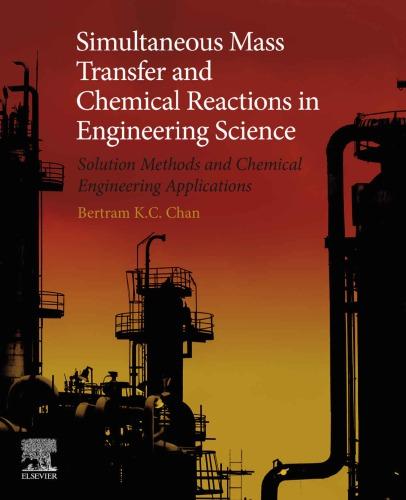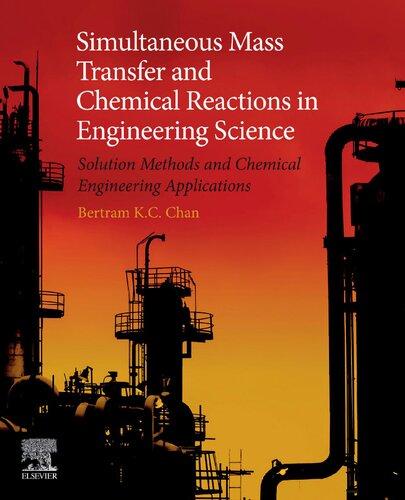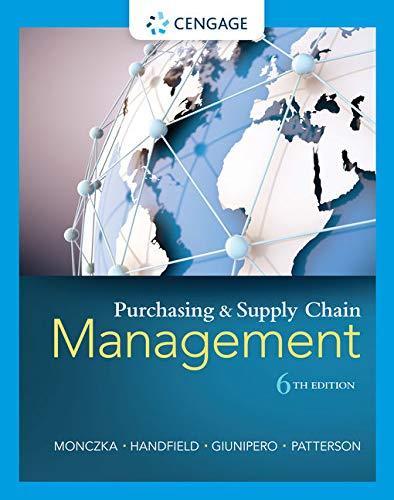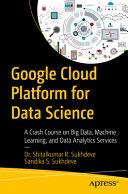Instant digital products (PDF, ePub, MOBI) ready for you
Download now and discover formats that fit your needs...
Simultaneous Mass Transfer and Chemical Reactions in Engineering Science 1st Edition Bertram Chan
https://ebookmass.com/product/simultaneous-mass-transfer-and-chemicalreactions-in-engineering-science-1st-edition-bertram-chan/
ebookmass.com
Simultaneous Mass Transfer and Chemical Reactions in Engineering Science: Solution Methods and Chemical Engineering Applications
Bertram K.C. Chan
https://ebookmass.com/product/simultaneous-mass-transfer-and-chemicalreactions-in-engineering-science-solution-methods-and-chemicalengineering-applications-bertram-k-c-chan/
ebookmass.com
Diffusion: Mass Transfer in Fluid Systems (Cambridge Series in Chemical Engineering) 3rd Edition, (Ebook PDF)
https://ebookmass.com/product/diffusion-mass-transfer-in-fluidsystems-cambridge-series-in-chemical-engineering-3rd-edition-ebookpdf/ ebookmass.com
Purchasing and Supply Chain Management 6th Edition



https://ebookmass.com/product/purchasing-and-supply-chainmanagement-6th-edition/
ebookmass.com

Google Cloud Platform for Data Science: A Crash Course on Big Data, Machine Learning, and Data Analytics Services
Dr. Shitalkumar R. Sukhdeve
https://ebookmass.com/product/google-cloud-platform-for-data-sciencea-crash-course-on-big-data-machine-learning-and-data-analyticsservices-dr-shitalkumar-r-sukhdeve/
ebookmass.com


SimultaneousMassTransferandChemicalReactionsinEngineering Science
SimultaneousMassTransferandChemical ReactionsinEngineeringScience
BertramK.C.Chan
Author
BertramK.C.Chan 1534OrilliaCourt
CA
UnitedStates
CoverImage: ©PattadisWalarput/Getty
Images
Allbookspublishedby WILEY-VCH arecarefully produced.Nevertheless,authors,editors,and publisherdonotwarranttheinformation containedinthesebooks,includingthisbook, tobefreeoferrors.Readersareadvisedtokeep inmindthatstatements,data,illustrations, proceduraldetailsorotheritemsmay inadvertentlybeinaccurate.
LibraryofCongressCardNo.: appliedfor
BritishLibraryCataloguing-in-PublicationData Acataloguerecordforthisbookisavailable fromtheBritishLibrary.
Bibliographicinformationpublishedby theDeutscheNationalbibliothek TheDeutscheNationalbibliothekliststhis publicationintheDeutsche Nationalbibliografie;detailedbibliographic dataareavailableontheInternetat <http://dnb.d-nb.de>
©2023WILEY-VCHGmbH,Boschstr.12, 69469Weinheim,Germany
Allrightsreserved(includingthoseof translationintootherlanguages).Nopartof thisbookmaybereproducedinanyform–by photoprinting,microfilm,oranyother means–nortransmittedortranslatedintoa machinelanguagewithoutwrittenpermission fromthepublishers.Registerednames, trademarks,etc.usedinthisbook,evenwhen notspecificallymarkedassuch,arenottobe consideredunprotectedbylaw.
PrintISBN: 978-3-527-34665-3
ePDFISBN: 978-3-527-82350-5 ePubISBN: 978-3-527-82351-2
oBookISBN: 978-3-527-82352-9
Typesetting Straive,Chennai,India
Dedicatedto
● thegloryofGod,
● mybetterhalfMarieNashedYacoubChan,and
● thefondmemoriesofmyhighschoolphysicalscienceteacher,theRev.Brother VincentCotter,BSc,attheDeLaSalleCatholicCollege,Cronulla,Sydney,New SouthWales,Australia,aswellasmyformerprofessorsinChemicalEngineeringin Australia,including: –attheUniversityofNewSouthWales: ProfessorGeoffreyHaroldRoperandVisitingProfessorThomasHamilton Chilton,fromtheUniversityofDelaware,USA –andattheUniversityofSydney: ProfessorThomasGirvanHunterandProfessorRudolfGeorgeHermanPrince.
2DataAnalysisUsing R Programming 31
2.1DataandDataProcessing 32
2.1.1Introduction 32
2.1.2DataCoding 33
2.1.2.1AutomatedCodingSystems 34
2.1.3DataCapture 34
2.1.4DataEditing 35
2.1.5Imputations 35
2.1.6DataQuality 36
2.1.7QualityAssurance 36
2.1.8QualityControl 36
2.1.9QualityManagementinStatisticalAgencies 36
2.1.10ProducingResults 37
2.2Beginning R 38
2.2.1 R andStatistics 38
2.2.2AFirstSessionUsing R 40
2.2.3TheREnvironment(ThisisImportant!) 52
2.3 R asaCalculator 54
2.3.1MathematicalOperationsUsing R 54
2.3.2AssignmentofValuesin R,andComputationsUsingVectorsand Matrices 56
2.3.3ComputationsinVectorsandSimpleGraphics 57
2.3.4UseofFactorsin R Programming 57
2.3.4.1BodyMassIndex 59
2.3.5SimpleGraphics 59
2.3.6 x asVectorsandMatricesinStatistics 62
2.3.7SomeSpecialFunctionsthatCreateVectors 64
2.3.8ArraysandMatrices 65
2.3.9UseoftheDimensionFunction dim() in R 65
2.3.10UseoftheMatrixFunction matrix() in R 66
2.3.11SomeUsefulFunctionsOperatingonMatricesin R: colnames, rownames, and t (fortranspose) 66
2.3.12 NA “NotAvailable”forMissingValuesinDatasets 67
2.3.13SpecialFunctionsthatCreateVectors 68
2.4Using R inDataAnalysisinHumanGeneticEpidemiology 73
2.4.1EnteringDataatthe R CommandPrompt 73
2.4.1.1CreatingaData-Framefor R ComputationUsingtheEXCEL Spreadsheet(onaWindowsPlatform) 73
2.4.1.2ObtainingaDataFramefromaTextFile 75
2.4.1.3DataEntryandAnalysisUsingtheFunction data.entry() 77
2.4.1.4DataEntryUsingSeveralAvailable R Functions 77
2.4.1.5DataEntryandAnalysisUsingtheFunction scan() 79
2.4.1.6DataEntryandAnalysisUsingtheFunction Source() 81
2.4.1.7DataEntryandAnalysisUsingtheSpreadsheetInterfacein R 82
2.4.1.8HumanGeneticEpidemiologyUsing R:The CRAN Package Genetics 83
2.4.2TheFunction list() andtheConstructionof data.frame() in R 84
2.4.3StockMarketRiskAnalysis 87
2.4.3.1Univariate,Bivariate,andMultivariateDataAnalysis 87 2.AAppendix.DocumentationforthePlotFunction 109
2.A.1Description 109
2.A.2Usage 109
2.A.3Arguments 109
2.A.4Details 109
2.A.5SeeAlso 110 FurtherReading 110
3ATheoryofSimultaneousMassTransferandChemical ReactionswithNumericalSolutions 111
3.1Introduction 111
3.1.1AClassicalExperimentalStudyofSimultaneousAbsorptionofCarbon DioxideandAmmoniainWater 111
3.1.2PhysicalAbsorption 112
3.1.2.1Results 113
3.2BiomolecularReactions 114
3.2.1OccurrencesofSimultaneousBiomolecularReactionsandMassTransfer AreCommoninManyBiomedicalEnvironments 114
3.3SomeExamplesinChemicalEngineeringSciences 115
3.3.1SimultaneousChemicalReactionsandMassTransfer 115
3.4SomeModelsintheDiffusionalOperationsofEnvironmentalTransport Unaccompanied byChemicalReactions 116
3.4.1DiffusionModelsofEnvironmentalTransport 116
3.4.2Advection–DiffusionModelsofEnvironmentalTransport 116
3.5TheConceptofDiffusion 116
3.5.1Publishers’Remarks 116
3.5.2Fick’sLawsofDiffusion 117
3.5.2.1Fick’sFirstLawofDiffusion(Steady-StateLaw) 117
3.5.2.2Fick’sSecondLawofDiffusion 119
3.5.3DerivationofFick’sLawsofDiffusion 120
3.5.3.1Remarks:AdditionalRemarksonFick’sLawsofDiffusion 120
3.5.3.2ExampleSolutioninOneDimension:DiffusionLength 122
3.6TheConceptoftheMassTransferCoefficient 122
3.7TheoreticalModelsofMassTransfer 123
3.7.1Nernst One-Film TheoryModelandtheLewis–Whitman Two-Film Model 123
3.7.1.1GasTransferRates 123
3.7.1.2TheNernstOne-FilmModel 123
3.7.1.3MassTransferCoefficients 123
3.7.1.4TheLewis–WhitmanTwo-FilmModel 124
3.7.1.5TheTwo-FilmModel 124
3.7.1.6Single-FilmControl 126
3.7.1.7Applications 126
3.7.2Higbie’sPenetrationTheoryModel 127
3.7.3Danckwerts’SurfaceRenewalTheoryModel 129
3.7.4BoundaryLayerTheoryModel 131
3.7.4.1Fluid–FluidInterfaces 131
3.7.4.2Fluid–SolidInterfaces 131
3.7.4.3Example:Prandtl’sExperimentalMassTransferfromaFlatPlate 131
3.7.5MassTransferUnderLaminarFlowConditions 132
3.7.6MassTransferPastSolidsUnderTurbulentFlow 132
3.7.7SomeInterestingSpecialConditionsofMassTransfer 132
3.7.7.1EquimolarCounter-DiffusionofAandB(N A =− N B ) 132
3.7.7.2ForLiquid-PhaseDiffusion 133
3.7.7.3ConversionsFormulasforMassTransferCoefficientsinDifferent Forms 134
3.7.8ApplicationstoChemicalEngineeringDesign 134
3.7.8.1DesigningaPackedColumnfortheAbsorptionofGaseousCO2 bya LiquidSolutionofNaOH,UsingtheMathematicalModelof SimultaneousGasAbsorptionwithChemicalReactions 134
3.7.8.2CalculationofPackedHeightRequirementforReducingtheChlorine ConcentrationinaChlorine–AirMixture 141
3.8TheoryofSimultaneousBimolecularReactionsandMassTransferin TwoDimensions 144
3.8.1NumericalSolutionsofaModelinTermsofSimultaneousSemi-linear ParabolicDifferentialEquations 144
3.8.1.1TheoryofSimultaneousBimolecularReactionsandMassTransferin TwoDimensions 144
3.8.2ExistenceandUniquenessTheoremsofFirst-OrderLinearOrdinary DifferentialEquations 174
3.8.2.1DifferentialEquations 174
3.8.2.2ContractionMappingsonaBanachSpace 174
3.8.2.3ApplicationtoDifferentialEquations 177
3.8.3AnExistenceTheoremoftheGoverningSimultaneousSemi-linear ParabolicPartialDifferentialEquations 183
3.8.4AUniquenessTheoremoftheGoverningSimultaneousSemi-linear ParabolicPartialDifferentialEquations 188
3.9TheoryofSimultaneousBimolecularReactionsandMassTransferin TwoDimensions:FurtherCasesofPracticalInterests 192
3.9.1CaseofStagnantFilmofFiniteThickness–Second-OrderIrreversible Reactions 192
3.9.2CaseofUnsteady-StateAbsorptionintheStagnantLiquid–Slow First-OrderReaction(S&P325,328) 196
3.9.3SimultaneousAbsorptionofTwoGasesinaLiquidinWhichEachThen ReactsWitha Third ComponentintheLiquid 198
5.3SolvingPartialDifferentialEquationsUsingthe R Package ReacTran 395
5.3.1WorkedExamples 395
5.4SomeFinalRemarksonSolvingPartialDifferentialEquationsUsingthe R Package ReacTran 555
5.4.1PartialDifferentialEquations 555
5.4.2AParabolicPDE 557
5.4.2.1Steady-StateSolution 558
5.4.2.2TheMethodofLines 559
FurtherReading 560
6SolvingPartialDifferentialEquations,GenerallyApplicableto ModelingSimultaneousMassTransferandChemical Reactions,Usingthe R Package ReacTran 561
6.1PartialDifferentialEquations(PDE) 561
6.2AParabolicPDE 562
6.3Steady-StateSolution 563
6.3.1TheMethodofLines 565
6.3.2AHyperbolicPDE 566
6.4TheGeneral3DAdvective–DiffusiveTransportPDE 568
6.4.1AnEllipticPDE 568
6.5TheGeneral3DAdvective–DiffusiveTransportPDE 577
6.5.1TheAdvectionEquation 577
6.5.2SolvingtheAdvectionEquation 578
6.5.3TheAdvectionOperatorintheIncompressibleNavier–Stokes Equations 579 FurtherReading 641
References 643 FurtherReading 647 Index 649
Preface
Thisbookaimstoprovideacomprehensivetheoreticalreferenceforstudents, professors,designandpracticingengineersinthechemical,biomolecular,and processengineeringindustriesathoroughandmodernscientificapproachtothe designofmajorequipmentforprocessesinvolvingsimultaneousmasstransferand chemicalreactions.
KeyFeatures
● Presentsthebasicscientificandcomputationalmodelsofdiffusionalprocesses involvingmasstransferwithsimultaneouschemicalreactions.
● Providesavigoroustheoreticalandcomputationalapproachtoprocessesinvolvingsimultaneousmasstransferandchemicalreactions.
● Involvestheuseoftheopen-sourcedcomputerprogramminglanguage R,for quantitativeassessmentintheanalysisofmodelsforsimultaneousmasstransfer andchemicalreactions.
WhatProblemsDoesthisBookSolve?
Thisbookisacompleteresourcefor
● Afundamentaldescriptionofthescientificbasisfordiffusionalprocessesand masstransferoperationsinthepresenceofsimultaneouschemicalreactions. Severalmodelsarepresented,assessed,andshowcasedforengineeringdesign applications.
● Basedonavigorousassessmentofseveraltheoreticalmodelsformasstransfer,a selectedpreferredmethodologyisdemonstratedandrecommendedasafirmbasis forengineeringdesign.
AuthorBiography
BertramK.C.Chan,PhD,PE(California,USA),LifeMember–IEEE, RegisteredProfessionalChemicalEngineerintheStateofCalifornia, completedhissecondaryeducationintheDeLaSalleCollege,Cronulla,Sydney, NewSouthWales,Australia,havingpassedtheNewSouthWalesStateLeaving CertificateExamination(vizthestate-wideuniversitymatriculationpublicexamination)withexcellentresults,particularlyinpureandappliedmathematics,and inHonorsPhysicsandHonorsChemistry.HethencompletedbothaBachelorof SciencedegreeinChemicalEngineeringwithFirstClassHonors,andaMasterof EngineeringSciencedegreeinNuclearEngineeringattheUniversityofNewSouth Wales,followedbyaPhDdegreeinChemicalandBiomolecularEngineeringatthe UniversityofSydney,bothuniversitiesareinSydney,NewSouthWales,Australia.
ThiswasfollowedbytwoyearsofworkingasaResearchEngineeringScientist (inNuclearEngineering)attheAustralianAtomicEnergyCommissionResearch Establishment,LucasHeights,NewSouthWales,andtwoyearsofaCanadian AtomicEnergyCommissionPost-doctoralFellowship(inChemicalandNuclear Engineering)attheUniversityofWaterloo,Waterloo,Ontario,Canada.
HehadundertakenadditionalgraduatestudiesattheUniversityofNewSouth Wales,attheAmericanUniversityofBeirut,andatStanfordUniversity,inmathematicalstatistics,computerscience,andpureandappliedmathematics(abstract algebra,automatatheory,numericalanalysis,etc.),andinelectronics,andelectromagneticengineering.
Hisprofessionalcareerincludesover10yearsoffull-time,and10yearsof part-time,university-levelteachingandresearchexperiencesinseveralacademic andindustrialinstitutions,includingaResearchAssociateshipinBiomedical andStatisticalAnalysis,PerinatalBiologySection,ObGynDepartment,UniversityofSouthernCaliforniaMedicalSchool,teachingatLomaLindaUniversity, MiddleEastCollege(nowUniversity),andSanJoseStateUniversity,andhad heldfull-timeindustrialresearchstaffpositions,intheSiliconValley,California, for27years–atLockheedMissile&SpaceCompany(10years),AppleComputer (7years),Hewlett-Packard(3years),andasaresearchanddesignelectromagnetic compatibilityengineeratastart-upcompany:FoundryNetworks(7years).
IntroductiontoSimultaneousMassTransferandChemical ReactionsinEngineeringScience
Inmanybiochemical,biomedical,andchemicalprocesses,inboththechemical industryandinphysiologicalsystems,includingenvironmentalsciences,mass transfer,accompaniedbyreversible,complexbiochemical,orinchemicalreactions ingas–liquidsystems,isfrequentlyfound.Fromtheviewpointofbiochemical and/orchemicaldesignpurposes,itisveryimportantthattheabsorptionratesof thetransferredreactantsmaybeestimatedaccurately.
Moreover,themasstransferphenomenacanalsoaffectsubstantiallyimportant processvariableslikeselectivityandyield.Considerableresearchefforthasbeen expendedindescribingtheseprocessesandinthedevelopmentofmathematical modelsthatmaybeusedforthecomputationofthemasstransferratesandother parameters.
Forexample,thedescriptionoftheabsorptionofagasfollowedbyasingle first-orderreversiblereactionissimpleandstraightforward.Forallmasstransfer models,e.g.film,surfacerenewal,andpenetration,thisprocessmaybeanalytically solved.Forotherprocesses,however,onlyforalimitednumberofspecialcases analyticalsolutionsarepossible,andthereforenumericaltechniquesmustbeused forthedescriptionofthesephenomena.Besidesnumericallysolvedabsorption models,themasstransferratesoftenmaybecalculated,withsufficientaccuracyby simplifyingtheactualprocessbymeansofapproximationsand/orlinearizations. Inthisbook,anoverviewwillbegivenoftheabsorptionmodelsthatareavailable forthecalculationofthemasstransferratesingas–liquidsystemswith(complex) reversiblereactions.Bothnumericallysolvedandapproximatedmodelswillbe treatedandconclusionsontheapplicabilityandrestrictionswillbepresented.
1.1Gas–LiquidReactions
Itiswellknownthatmanybiochemicalandchemicalprocessesinvolvemasstransferofoneormorespeciesfromthegasphaseintotheliquidphase.Intheliquid phase,thespeciesfromthegasphaseareconvertedbyoneormore(possiblyirreversible)biochemicalorchemicalreactionswithcertainspeciespresentintheliquid phase.
TypicalofsuchexamplesareprovidedinSections1.1.1.1and1.1.1.2.
SimultaneousMassTransferandChemicalReactionsinEngineeringScience,FirstEdition.BertramK.C.Chan. ©2023WILEY-VCHGmbH.Published2023byWILEY-VCHGmbH.
1.1.1SimultaneousBiomolecularReactionsandMassTransfer
1.1.1.1TheBiomedicalEnvironment
Inepidemiologicinvestigations,occurrencesofsimultaneousbiomolecularreactionsandmasstransferarecommoninmanybiomedicalenvironments.Some typicalexamplesare:
(1) IntestinalDrugAbsorptionInvolvingBio-transportersandMetabolic ReactionswithEnzymes [1]:Theabsorptionofdrugsviatheoralroute isasubjectofon-goingandseriousinvestigationsinthepharmaceutical industrysincegoodbio-availabilityimpliesthatthedrugisabletoreachthe systemiccirculationviatheoralpath.Oralabsorptiondependsonboththe drug properties andthephysiologyofthegastrointestinaltract,or patientproperties, includingdrugdissolution,druginteractionwiththeaqueousenvironmentand membrane,permeationacrossmembrane,andirreversibleremovalbyorgans suchastheliver,intestines,andthelung.
(2) OxygenTransportviaMetalComplexes [1]:Onaverage,anadultatrest consumes250mlofpureoxygenperminutetoprovideenergyforallthe tissuesandorgansofthebody,evenwhenthebodyisatrest.Duringstrenuous activities,suchasexercising,theoxygenneedsincreasedramatically.The oxygenistransportedinthebloodfromthelungstothetissueswhereitis consumed.However,onlyabout1.5%oftheoxygentransportedinthebloodis dissolveddirectlyinthebloodplasma.Transportingthelargeamountofoxygen requiredbythebody,andallowingittoleavethebloodwhenitreachesthe tissuesthatdemandthemostoxygen,requireamoresophisticatedmechanism thansimplydissolvingthegasintheblood.Tomeetthischallenge,thebody isequippedwithafinelytunedtransportsystemthatcentersonthemetal complex heme.Themetalionsbindandthenreleaseligandsinsomeprocesses, andtooxidizeandreduceinotherprocesses,makingthemidealforusein biologicalsystems.Themostcommonmetalusedinthebodyisiron,andit playsacentralroleinalmostalllivingcells.Forexample,ironcomplexesare usedinthetransportofoxygeninthebloodandtissues.Metal–ioncomplexes consistofametalionthatisbondedvia“coordinate-covalentbonds”toa smallnumberofanionsorneutralmoleculescalledligands.Forexample, theammonia(NH3 )ligandisamono-dentateligand;i.e.eachmono-dentate ligandinametal–ioncomplexpossessesasingleelectron-pair-donoratom andoccupiesonlyonesiteinthecoordinationsphereofametalion.Some ligandshavetwoormoreelectron-pair-donoratomsthatcansimultaneously coordinatetoametalionandoccupytwoormorecoordinationsites;these ligandsarecalledpolydentateligands.Theyarealsoknownaschelating(Greek wordfor“claw”)agentsbecausetheyappeartograspthemetalionbetweentwo ormoreelectron-pair-donoratoms.Thecoordinationnumberofametalrefers tothetotalnumberofoccupiedcoordinationsitesaroundthecentralmetalion (i.e.thetotalnumberofmetal–ligandbondsinthecomplex).Thisprocessis anotherimportantexampleofbiomolecularreactionandtransport.
1IntroductiontoSimultaneousMassTransferandChemicalReactionsinEngineeringScience
thatsomephenomenaofgas–liquidmasstransfermayberegardedasnearly incompletelyexplained.Moreover,theHigbiepenetrationmodelhasbeenusedas abasisforthedevelopmentofsomenewreactormodels.Theinfluenceofthebulk liquidonthemasstransferprocesshasbeenstudiedinsomedetail.Moreattention hasbeenpaidtothedynamicalbehaviorandstabilityofgas–liquidreactorsand theinfluenceofmasstransferlimitationsonthedynamics.Also,someimportant differencesbetweentheresultsoftheHigbiepenetrationmodelandtheWhitman stagnantfilmmodelarefound.
Analyticalsolutionofmicromodelsformasstransfer(accompaniedbychemical reactions)isrestrictedtoasymptoticcasesinwhichmanysimplifyingassumptions hadtobemade(e.g.reactionkineticsaresimpleandtherateofthereactionis eitherveryfastorveryslowcomparedtothemasstransfer).Forallothersituations, numerical–computationaltechniquesarerequiredforsolvingthecoupledmassbalancesofthemicromodel.
Ingeneral,itseemsthatmostlynumericalsolutiontechniqueshavebeenapplied. Whereverpossible,analyticalsolutionsofasymptoticcaseshavebeenusedtocheck thevalidityofthenumericalsolutionmethod.
Forexample,bymodifyingoneoftheboundaryconditionsoftheHigbiepenetrationmodel,ithadbeenfoundthatthemasstransfermaybeaffectedbythepresence ofthebulkliquid.Forexample,inapackedcolumn,theliquidflowsdownthecolumnasathinlayeroverthepackings.Ithasbeenexaminedwhetherornotthe penetrationmodelmaybeappliedfortheseconfigurations.Bothphysicalabsorptionandabsorptionaccompaniedbyfirst-andsecond-orderchemicalreactionshave beeninvestigated.
Frommodelcalculations,itisconcludedthattheoriginalpenetrationtheory,by assumingthepresenceofawell-mixedliquidbulk,maybeappliedalsotosystems wherenoliquidbulkispresent,providedthattheliquidlayerissufficientlythick!
● Forpackedcolumnsthismeans,intermsoftheSherwoodnumber, N Sh = 4,for bothphysicalabsorptionandabsorptionaccompaniedbyafirst-orderreaction.
● Incaseofasecond-order1,1-reaction,asecondcriterion: N Sh ≥ 4√(Db /Da )hasto befulfilled.
● Forverythinliquidlayers(N Sh < 4,or N Sh < 4√(Db /Da )),theoriginalpenetration modelmaygiveerroneousresults,dependingontheexactphysicalandchemical parameters,andamodifiedmodelisrequired.
Analyticalsolutionofmodelsforgas–liquidreactorsisrestrictedtoafewasymptotic cases,whilemostnumericalmodelsmakeuseofthephysicallylessrealisticstagnant filmmodel–thisisrelativelysimplisticandeasytoapplyusingthe“hinterland model.” ThehinterlandmodelassumesthereactionphasetoconsistofONLYastagnantfilmandawell-mixedbulk.Inflowandoutflowofspeciestoandfromthereactor proceedsviathenon-reactionphaseorviathebulkofthereactionphase,butnevervia thestagnantfilm.(“Hinterland”isaGermanwordmeaning“thelandbehind”[aport, acity, …]ingeographicusages!)
BymodifyingoneoftheboundaryconditionsoftheHigbiepenetrationmodel, itillustratedhowthemasstransfermaybeaffectedbythepresenceoftheliquid bulk.Thus,forexample,inapackedcolumn,theliquidflowsasathinlayeroverthe structuredordumpedpacking.Ithasbeenexaminedwhetherornotthepenetration modelcanbeappliedforthesesituations.Bothphysicalabsorptionandabsorption accompaniedbyfirst-andsecond-orderchemicalreactionshavebeeninvestigated.
Frommodelcalculations,itisconcludedthattheoriginalpenetrationtheory, whichassumesthepresenceofawell-mixedliquidbulk,maybeappliedalsoto systemswherenoliquidbulkispresent,providedthattheliquidlayerhassufficient thickness.
Forpackedcolumns,thismeans,intermsofSherwoodnumber, Sh > 4forboth physicalabsorptionandabsorptionaccompaniedbyafirst-orderreaction.Incaseof asecond-order1,1-reactionasecondcriterion Sh ≥ 4√(Db /Da )hastobefulfilled.For verythinliquidlayers, Sh < 4or Sh < √(Db /Da ),theoriginalpenetrationmodelmay giveerroneousresults,dependingontheexactphysicalandchemicalparameters, andthemodifiedmodelisrequired.
Mostnumericalmodelsofgas–liquidreactorsmakeuseofthephysicallylessrealisticstagnantfilmmodelbecauseimplementationofthestagnantfilmmodelisrelativelyeasyusingthehinterlandconcept.Thecombinationofstagnantfilmmodel andHinterlandconceptmaysuccessfullypredictmanyphenomenaofgas–liquid reactors.
TheHigbiepenetrationmodelishoweverpreferredasamicromodelbecauseitis physicallymorerealistic.DirectimplementationofthehinterlandconceptisnotpossiblewiththeHigbiepenetrationmodel.Nevertheless,numericaltechniqueshave beenappliedtodevelopanewmodelthatimplementstheHigbiepenetrationmodel forthephenomenonmasstransferaccompaniedbychemicalreactioninwell-mixed two-phasereactors:assumingthestagnantfilm.
Amodelwasdevelopedthatsimulatesthedynamicbehaviorofgas–liquidtank reactorsbysimultaneouslysolvingtheHigbiepenetrationmodelforthephenomenonofmasstransferaccompaniedbychemicalreactionandthedynamicgas andliquidphasecomponentbalances.Themodelmakesitpossibletoimplementan alternativeforthewell-knownhinterlandconcept,whichisusuallyusedtogether withthestagnantfilmmodel.Incontrasttomanyothernumericalandanalytical models,thepresentmodelcanbeusedforawiderangeofconditions,theentire rangeofHattanumbers,(semi-)batchreactors,multiplecomplexreactions,and equilibriumreactions,componentswithdifferentdiffusioncoefficients,andalsofor systemswithmorethanonegasphasecomponent.Bycomparingthemodelresults withanalyticalasymptoticsolutions,itwasconcludedthatthemodelpredicts thedynamicbehaviorofthereactorsatisfactorily.Ithadbeenshownthatunder somecircumstances,substantialdifferencesexistbetweentheexactnumerical andexistingapproximateresults.Itisalsoknownthatforsomespecialcases, differencescanexistbetweentheresultsobtainedusingthestagnantfilmmodel withhinterlandconceptandtheimplementationoftheHigbiepenetrationmodel.
Analyticalsolutionofmodelsforgas–liquidreactorsisrestrictedtoafewasymptoticcases,whilemostnumericalmodelsmakeuseofthephysicallylessrealistic stagnantfilmmodel.
1.1.2Conclusions
1.Thepenetrationmodelispreferredforthephenomenonmasstransferaccompaniedbychemicalreactioninwell-mixedtwo-phasereactors.
2.Bycomparingthemodelresultswithanalyticalasymptoticsolutions,itisconcludedthatthemodelpredictsthereactorsatisfactorily.Itisshownthatformany asymptoticcases,theresultsofthisnewmodelcoincidewiththeresultsofthe stagnantfilmmodelwithhinterlandconcept.
3.Forsomespecialconditions,differencesmayexistbetweentheresultsobtained usingthestagnantfilmmodelwithhinterlandconceptandtheimplementation oftheHigbiepenetrationmodel.
4.Animportantresultisthatfor1,1-reactions,thesaturationoftheliquidphase withgasphasespeciesdoesnotapproachzerowithincreasingreactionrate (increasingHattanumber),contrarytowhatispredictedbythefilmmodelwith Hinterlandconcept.Anotherimportantdeviationmaybefoundatthespecific conditionsofaso-calledinstantaneousreactionincombinationwiththeabsence ofchemicalenhancementofmasstransfer.
5.Applicationofthepenetrationmodeldoesnotprovideanynumericaldifficulties, whileapplicationofthestagnantfilmmodelwouldleadtoadiscontinuityinthe concentrationgradient.
6.Anotherdisadvantageofthehinterlandconceptisthatitcanstrictlyonlybe appliedtoisothermalsystems,whereasinthesystemsinvestigatedinthisthesis thereactionenthalpyisanimportantparameterthatmaysignificantlyinfluence thephenomenaofgas–liquidmasstransfer.
Arigorousmodelmaybedevelopedthatsimulatesthedynamicbehaviorofstirred nonisothermalgas–liquidreactorsbysimultaneouslysolvingtheHigbiepenetration modelforthephenomenonmasstransferaccompaniedbychemicalreactionand thedynamicgasandliquidphasecomponentandheatbalances.Thisisachieved bycouplingtheordinarydifferentialequationsofthemacromodelmassandheat balancestothepartialdifferentialequationsofthepenetrationmodel.Thismodel isnotyetpublished!
Usingthenewlydevelopedrigorousreactormodel,itisshownthatdynamicinstability(limitcycles)canoccuringas–liquidreactors.Theinfluenceofmasstransfer limitationsontheselimitcycleshasbeenstudied,andithasbeenfoundthatmass transferlimitationsmaketheprocessmorestable.
1.1.3Summary
Althoughtherigorousmodelisbelievedtobeaveryaccuratemodel,ithasthe disadvantagethatowingtothecomplexnumericalmethodsapplieditisarather
1IntroductiontoSimultaneousMassTransferandChemicalReactionsinEngineeringScience
(ii)Theliquidmayberunninginalayeroveraninclinesorverticalsurface,and theflowmaybeturbulent(as,forexample,inawetted-wallcylindricalcolumn operatingatasufficientlyhighReynoldsnumber),orripplesmaydevelopand enhancetheabsorptionratebyconvectivemotion.Discontinuitiesonthesurfacemaycauseperiodicmixingoftheliquidinthecourseofitsflow,orstrings ofdiscsorofspheres.
(iii)Theliquidmaybeadvantageouslyagitatedbyamechanicalstirrer,whichmay alsoentrainbubblesofgasesintotheliquid.
(iv)Theliquidmaybesprayedthroughthegasasjetsordrops.Firstconsidera steady-statesituationinwhichthecompositionoftheliquidandgas,averaged overaspecifiedregionandalsowithrespecttoanytemporalfluctuations,are statisticallyconstant.Forexample,onemayconsideranagitatedvesselthrough whichliquidandgasflowsteadily,bothbeingsothoroughlymixedthattheir time-averagecompositionsarethesameatallpoints;oronemayconsidera shortverticalsectionofapackedcolumn(orsphereordiscorwetted-wallcolumn)operatingatsteadystate,suchthattheaveragecompositionsoftheliquid andgasintheelementremain constant withtime.
Clearly,thesituationisacomplicatedone:theconcentrationsofthevariousspeciesarenotuniformorconstantwhenmeasuredovershortlengthand timescales.Diffusion,convection, and reactionproceedsimultaneously.The natureoftheconvectivemovementsofliquidandgasisdifficulttodefine:any attempttodescribethemcompletelywouldencounterconsiderablecomplications.Thus,toobtainusefulpredictionsaboutthebehaviorofsuchsystems forpracticalpurposes,itisnecessarytousesimplifiedmodelswhichsimulate thesituationsufficientlywell,withoutintroducingalargenumberofunknown parameters.Thisapproachmaytakeanumberofsimplifyingsteps,asfollows: (A)PhysicalAbsorption[2]
Considerfirstphysicalabsorption,inwhichthegasdissolvesintheliquid without anyreaction;itisfoundexperimentallythattherateofabsorption ofthegasisgivenby
inwhich A* istheconcentrationofdissolvedgasattheinterfacebetween gasandliquid,assumingthispartialpressuretobeuniformthroughout theelementofspaceunderdiscussion.Theareaofinterfacebetweenthe gasandliquid,perunitvolumeofthesystem,is a and kL isthe“physical mass-transfercoefficient.” R istherateoftransferwhichmayvaryfrom pointtopointandfromtimetotime. R istheaveragerateoftransferofgas perunitarea;theactualrateoftransfermayvaryfrompointtopoint,and fromtimetotime. A0 istheaverageconcentrationofdissolvedgasinthe bulkoftheliquid.
Itisusuallynotpossibletodetermine kL and a separately,bymeasurementsofphysicalabsorption.Forexample,inapackedcolumn,the
